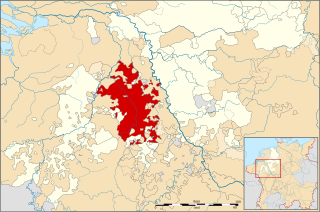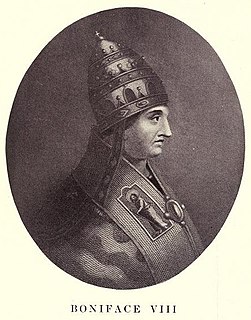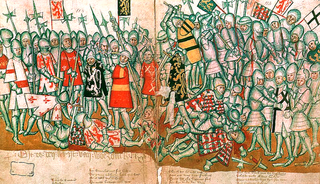
Adolf was Count of Nassau from about 1276 and elected King of Germany from 1292 until his deposition by the prince-electors in 1298. He was never crowned by the Pope, which would have secured him the title of Holy Roman Emperor. He was the first physically and mentally healthy ruler of the Holy Roman Empire ever to be deposed without a papal excommunication. Adolf died shortly afterwards in the Battle of Göllheim fighting against his successor Albert of Habsburg.

The County of Mark was a county and state of the Holy Roman Empire in the Lower Rhenish–Westphalian Circle. It lay on both sides of the Ruhr river along the Volme and Lenne rivers.

The Duchy of Jülich comprised a state within the Holy Roman Empire from the 11th to the 18th centuries. The duchy lay left of the Rhine river between the Electorate of Cologne in the east and the Duchy of Limburg in the west. It had territories on both sides of the river Rur, around its capital Jülich – the former Roman Iuliacum – in the lower Rhineland. The duchy amalgamated with the County of Berg beyond the Rhine in 1423, and from then on also became known as Jülich-Berg.
Konrad von Hochstaden was Archbishop of Cologne from 1238 to 1261.
Adolf of Altena, Adolf of Berg or Adolf of Cologne, was Archbishop of Cologne from 1193 to 1205.

Adolf IV of Berg count of Berg from 1132 until 1160 and of Altena, son of Adolf III of Berg count of Berg and Hövel. He married (1st) Adelheid von Arnsberg, a daughter of Heinrich count von Rietberg; then (2nd) Irmgard (?) von Schwarzenberg, a daughter of Engelbert von Schwarzenberg.

Arnold of Altena, count of Altena, count of Isenberg and Hövel, Vogt of Werden (1166–1209) was son of Eberhard IV of Berg. He inherited the north-western territorium of Altena, and became 1st count of Isenberg in 1200.

La Marck, original German name von der Mar(c)k, was a noble family, which from about 1200 appeared as the Counts of Mark.

The house of Limburg Stirum, which adopted its name in the 12th century from the sovereign county of Limburg an der Lenne in what is now Germany, is one of the oldest families in Europe. It is the eldest and only surviving branch of the House of Berg, which was among the most powerful dynasties in the region of the lower Rhine during the Middle Ages. Some historians link them to an even older dynasty, the Ezzonen, going back to the 9th century.
John I of Isenburg-Limburg, "The blind Lord" was from 1289 Count of (Isenburg-) Limburg and the head of the House of Limburg. The core territory of the Lordship of Limburg consisted of the city of Limburg an der Lahn and several surrounding villages.
SiegfriedII of Westerburg was Archbishop of Cologne from 1275 to 1297.
Walram of Jülich was Archbishop of Cologne from 1332 to his death in 1349.
Holte or Holthe is the surname of:

Count Heinrich II of Virneburg was Archbishop of Cologne from 1304 to his death in 1332.
Engelbert II of the Mark was Count of the Mark and through marriage, Count of Arenberg.
Adolf III of Schauenburg (1511–1556) was the Archbishop-Elector of Cologne from 1547 to 1556.
Anton of Schauenburg was Archbishop-Elector of Cologne from 1557 to 1558.
Adolph II of the Marck was Count of the Marck.
Emicho I, Count of Nassau-Hadamar, was the second son of Count Otto I of Nassau and his wife Agnes, the daughter of Count Emich IV of Leiningen-Landeck. Emicho was the founder of the elder line of Nassau-Hadamar. He was a cousin of King Adolf of Germany. He and his brother Henry fought on Adolf's side in the Battle of Göllheim on 2 July 1298.
Engelbert I, Count of the Mark was a German nobleman. He was the ruling Count of the Mark from 1249 until his death.
















